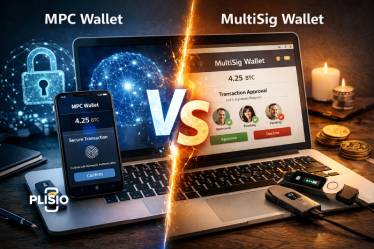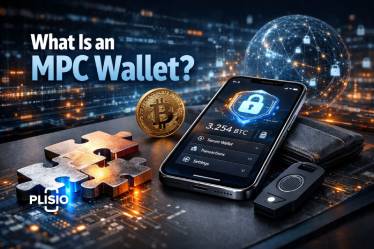Is Sui the Next Big Thing in Crypto? Meet the `Solana Killer` Blockchain.

In the ever-evolving landscape of Web3 technology, marked by continuous innovation and transformative shifts, the SUI Blockchain stands out as a key contender disrupting traditional frameworks. Boasting a history of remarkable fundraising achievements and notable growth in valuation, SUI has become a focal point in the world of cryptocurrency. This article explores the core features of the SUI Blockchain, revealing its distinct characteristics, real-world uses, and the challenges it faces as it redefines our engagement with decentralized technology and digital assets within the Web3 sphere.
What is the SUI blockchain?
The Sui blockchain, a Layer-1 platform, emerges as a formidable force in the Web3 ecosystem, challenging established norms in decentralized technology. Launched on May 3, 2023, by the founders of Mysten Labs, Sui showcases a new perspective in the world of cryptocurrency with its notable fundraising and valuation growth, including securing $300 million in funding and a valuation of $2 billion by September 2022.
At its core, Sui is designed to optimize smart contract execution and enhance scalability for decentralized applications (dApps). It employs an innovative object-centric data model that keeps digital assets and their attributes on-chain, yet distinct from smart contracts. This architecture, complemented by parallel processing, enables quick transaction finalization, like asset transfers, in real-time while ensuring security.
Sui's unique approach sets it apart from competitors like Ethereum, Solana, and Polkadot, focusing on increased speed and scalability without compromising security. Its features include the Sui consensus engine, parallel transaction execution, and the Sui Move smart contract programming language. The network operates on a delegated proof of stake (dPoS) system, where validators stake SUI, its native cryptocurrency, for transaction validation. SUI also plays a pivotal role in executing custom programs, serving as a medium of exchange, and incentivizing platform support.
Developed with the Move programming language, Sui caters to diverse Web3 projects, from retail payments to gaming, and supports unique functionalities such as bypassing consensus for simple transactions. Its token, SUI, is multifunctional, facilitating transactions, staking, and governance. The network's permissionless validator system guarantees decentralized integrity and robust security.
Sui is notable for its tools based on the Sui SDK, which aid in developing complex on-chain finance, DeFi, and upgradable NFTs. Its approach to resource processing and parallelizing simple transactions marks a departure from traditional blockchain models, boosting efficiency and reducing latency. This design and forward-thinking strategy have enabled Sui to process a record-breaking 65.8 million transactions in a single day, maintaining low and stable gas fees, illustrating its commitment to scalability and user experience. As such, Sui is positioning itself as a key player in the blockchain domain, addressing both developer and user needs, and contributing significantly to the evolution of blockchain technology.
How Does Sui Work?
The SUI Blockchain, a transformative Layer-1 blockchain, is carving a niche in the Web3 space with its innovative architecture and programming language. Central to its design is the SUI Move Language, a variant of the Move language originally created by Facebook for the Diem blockchain. This language, inspired by Rust, places a strong emphasis on security and efficient blockchain asset representations, making SUI one of the most secure smart contract platforms.
Sui distinguishes itself from other blockchains by addressing the blockchain trilemma: enhancing speed and scalability while maintaining high security standards. It does so through a unique combination of its consensus engine, the Move smart contract programming language, and parallel transaction execution. The network's delegated proof-of-stake (dPoS) system enables validators to stake SUI coins for transaction validation, using the token also for executing custom programs and incentivizing development.
Innovatively, SUI tracks the movement of objects, such as tokens, rather than the changes in user accounts. This object-centric approach enables near-instant finality and reduces double-spending incidents. Parallel transaction execution is a standout feature, with the capacity to handle up to 120,000 transactions per second, made possible by a directed acyclic graph mempool framework.
The Sui blockchain's consensus engine, featuring Bullshark, efficiently organizes data for processing, minimizing latency issues. Its architecture tackles first-generation blockchain issues through horizontal scaling, on-chain storage, sparse replay, and composability. Horizontal scaling processes transactions in parallel, avoiding bottlenecks common in other systems.
Sui's approach to transactions categorizes them as simple or complex. Simple transactions, like token transfers, can bypass consensus protocols for almost instant processing. Complex transactions leverage Narwhal, a directed acyclic graph (DAG)-based mempool, and Bullshark for ordering, increasing scalability.
Transaction Processing on SUI
The SUI Blockchain revolutionizes transaction processing with its innovative framework, differentiating between single-owner and shared object transactions. This distinction is crucial in understanding SUI's effective data management and smart contract execution capabilities.
Single-Owner Transactions represent activities like minting new tokens or deploying smart contracts, where a single address has full control. These transactions are streamlined since they're managed by one entity, ensuring faster execution and reduced complexity.
On the other hand, Shared Object Transactions involve multiple addresses working together, like in an auction scenario. This collaborative approach necessitates consensus from all parties, adding layers of validation for enhanced security but also increasing the transaction complexity.
The transaction process in SUI follows a meticulous procedure:
- User Initiation: A transaction starts with the user's action, sending it to a full node in the SUI network.
- Validation and Broadcast: The node checks the transaction's legitimacy and shares it with a group of validators.
- Consensus Building: These validators sign off on the transaction, creating a validation certificate.
- Wider Confirmation: This certificate is then sent across a broader validator network for additional verification.
A standout feature of SUI is its parallel transaction execution. This method, unlike the sequential processing seen in many blockchains, leverages SUI's object-centric architecture to process multiple transactions simultaneously. This parallelism allows for more transactions to be handled concurrently, significantly boosting the network's efficiency.
This parallel execution offers dual benefits: it not only accelerates transaction throughput but also mitigates network congestion risks. By handling transactions individually instead of in blocks, SUI sustains a fluid, responsive network environment, even under heavy transaction loads.
What Is $SUI Token?
The SUI token, as the native cryptocurrency of the Sui blockchain, plays a pivotal role in the network's ecosystem. Launched alongside the Sui mainnet on May 3, 2023, SUI has rapidly gained attention in the market, with its price soaring by 2000% on its first trading day from its presale value.
The token's utility extends beyond mere trading. Users can utilize SUI for various functions within the network, such as paying for gas fees, executing on-chain transactions, and staking to participate in the proof-of-stake mechanism. Additionally, SUI holders have the privilege of influencing the project's future through on-chain governance, where each vote is proportional to the amount of SUI staked.
In terms of distribution, SUI has a capped total supply of 10 billion tokens, with only about 528 million (or 5.28% of the total supply) currently circulating in the market. This limited supply underscores the token's value in the network's expanding economic activities. Mysten Labs has strategically allocated these tokens, with 20% going to early contributors, 14% to investors, 10% to its treasury, and 6% for a Community Access Program. The largest share, 50%, is managed by the Sui Foundation for delegation programs, grant programs, validator subsidies, and research and development.
Moreover, the Sui Foundation's control over half of the token supply ensures a focused deployment of resources towards the network's growth and stability. This centralized distribution aims to facilitate a robust and sustainable ecosystem for the Sui blockchain, balancing the need for active development with the broader community's involvement and incentives.
SUI's introduction to the market and its diverse applications within the Sui network exemplify its integral role in shaping the blockchain's functionality and future governance. With a carefully planned tokenomics structure, SUI is set to be a key driver in the network's growth and user engagement.
Real-Life Examples of Usage SUI
The SUI Blockchain is rapidly becoming a significant player in the Web3 technology space, offering a wide range of practical and innovative applications across various sectors.
Gaming Innovation: SUI is quickly turning into a gaming powerhouse, supporting a variety of unique gaming projects. Notably, it hosts "Abyss World," a high-fantasy adventure game, and "Run Legends," which promotes an active lifestyle through gaming. These games leverage SUI's high-performance capabilities to offer seamless, interactive experiences.
DeFi Ecosystem: In decentralized finance, SUI stands out by providing a robust and secure platform for various DeFi protocols. It supports innovative financial platforms like "Turbos Finance," "OmniBTC," and "Cetus Protocol," facilitating various financial transactions and services in a decentralized manner. These platforms highlight SUI's ability to handle complex financial operations with efficiency and security.
Social Networking and Community Building: SUI is also making strides in decentralized social networking, exemplified by "Polymedia Chat," which offers a platform free from centralized control. Additionally, "Suia" fosters a sense of community by connecting users with shared interests in NFTs. This aspect of SUI demonstrates its potential in building strong, decentralized online communities.
NFT Marketplaces and Projects: Embracing the burgeoning NFT trend, SUI hosts diverse NFT projects like "Cosmocadia," "Haven’s Compass," and "Studio Mirai." These platforms range from digital fashion to immersive gaming and art experiences, showcasing SUI's versatility in supporting creative and artistic endeavors. The blockchain's efficiency and security make it an ideal foundation for NFT transactions and interactions.
In addition to these sectors, SUI's potential extends to areas like supply chain management, digital identity verification, and decentralized data storage, demonstrating its adaptability and relevance in various real-world applications. The SUI Blockchain's diverse use cases underscore its capability to revolutionize multiple aspects of the digital world, making it a key player in the Web3 revolution.




